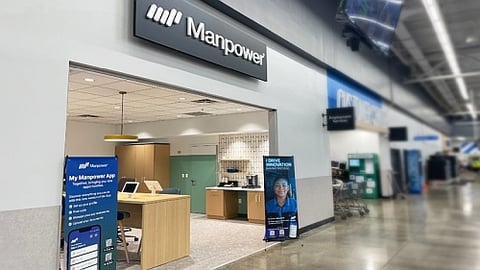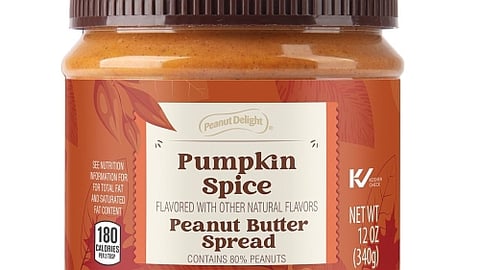THE FRIDAY 5: Grocers in Disaster Relief Mode; Kroger's Merger Fight Moves to Colorado
Welcome to The Friday 5, Progressive Grocer’s weekly roundup of the top news and trends in the food retail industry. Each Friday, we’ll take a look at the stories that are most important to our readers and also keep tabs on the trends that are poised to impact grocers.
1. Grocery Goodwill Following Hurricane Helene
As communities continue to grapple with the aftermath of Hurricane Helene, grocers have been playing their part in providing critical disaster relief supplies. Harris Teeter launched a register campaign now through Oct. 28, with shoppers able to round up at checkout at all locations, and 100% of funds donated will go directly to the American Red Cross.
Harris Teeter and Ingles Market, which had several stores affected by the storm, are also providing water to local communities. Ingles was able to reopen a store in the town of Madison that had temporarily closed.
Hy-Vee, which operates a disaster fleet that is often dispatched to areas devastated by storms and other events, is providing support to residents in Florida and other communities hit by Hurricane Helene. “For this disaster, we are supporting our partner Operation BBQ Relief in their efforts to feed those impacted by providing them with two supply trailers and a generator,” SVP of communications Tina Potthoff told PG.
Additionally, Food Lion, which operates several stores in hard-hit communities – announced that it is giving $1.5 million to areas affected by the storm and launched a register campaign that runs through Oct. 30. The Food Lion Feeds Charitable Foundation will distribute funds through its partner food banks and other organizations, including the American Red Cross and World Central Kitchen.
Other retailers continue to send supplies. Michigan-based food solutions company SpartanNash, for instance, donated four truckloads of water for disaster relief and dispatched a team to Florida to deliver meals with Convoy of Hope. Also this week, The Fresh Market donated bottled water to residents in the cities of Tallahassee, Fla. and Asheville, N.C.
Southeastern Grocers and its SEG Gives Foundation are also helping communities in their home state of Florida.
2. Kroger Awaits Verdict in FTC Trial as Merger Fights Moves to Colorado
It was another week in court for Kroger as the grocer and its legal counsel worked to convince federal and state regulators that it should be able to merge with Albertsons Cos. On Sept. 17, the two retailers concluded their hearing with the FTC regarding the government’s motion for a preliminary injunction to block the grocers’ proposed $24.6 billion merger. U.S. District Judge for Oregon Adrienne Nelson allowed final briefings until Sept. 27 and noted that she will work “as expeditiously as possible, because everyone is anticipating a decision.”
Meanwhile, Kroger’s court battle against the state of Washington brought testimony from five third-party witnesses on grocery competition this week. For its part, Washington state is seeking to avoid the situation it found itself in a decade ago, when Albertsons acquired the Safeway chain, which resulted in Haggen’s bankruptcy.
The third merger review case in Colorado began Sept. 30. According to the lawsuit filed by Colorado Attorney General Phil Weiser, the deal would eliminate head-to-head competition between Kroger and Albertsons and consolidate an already concentrated market.
Kroger says its divestiture plan directly addresses competitive harm in Colorado, with C&S Wholesale poised to operate 91 of the 105 Colorado Albertsons stores. Only 14 of the stores included in the merger deal will be operated by Kroger, and there is no competitive harm in any of those 14 communities. Kroger says its plan is to reduce prices in Albertsons store locations by $1 billion, including $40 million in Colorado alone.
3. CVS Workers Authorize Strike as Company Lays Off Nearly 3,000 Employees
News from CVS made waves this week as the company deals with an impending strike by union workers in California. Members of UFCW union locals representing thousands of CVS Pharmacy workers throughout California have voted overwhelmingly in favor of authorizing their bargaining team to call for an unfair labor practice strike, should one be necessary.
“When we started negotiating with CVS on a new contract in May, we came to the table willing to put in the time and work to get it done,” noted the UFCW CVS Bargaining Team in a statement released Sept. 27. “But instead of working with us towards a reasonable contract, our employer would rather disrespect us to our faces, offer proposals that grossly underestimate our value and their wealth, and engage in multiple labor violations.”
The next bargaining session is scheduled for Oct. 16.
In other CVS news this week, it came to light that the company will eliminate about 2,900 jobs in a bid to lower costs. These latest job cuts are on top of the approximately 5,000 or so layoffs revealed last year. In 2021, CVS Health said that it would shutter around 900 stores between 2022 and 2024.
“We’ve embarked on a multiyear initiative to deliver $2 billion in cost savings by reducing expenses and investing in technologies to enhance how we work,” a company representative noted in a statement cited by CNN. The layoffs account for under 1% of CVS Health’s workforce.
“Impacted positions are primarily corporate roles,” added the company representative. “The reductions will not impact front-line jobs in our stores, pharmacies and distribution centers.”
4. Port Strike Poised to Bring Supply Chain Issues
The anticipated strike by the International Longshoremen's Association began this week as the group announced that it closed ports along the Atlantic and Gulf Coasts, as of 12:01 a.m. Oct. 1. Those 36 ports handle 57% of the container volume in the Unitee States.
Port workers walked off their jobs and set up picket lines in various port facilities after the union rejected the final offer made by the United States Maritime Alliance (USMX). More than 85,000 waterside employees belong to the union.
The USMX, for its part, stressed that it had upped its wage increase offer to more than 50% over the proposed contract that extends over six years.
“A port strike would paralyze U.S. trade and raise prices at a time when consumers and businesses are starting to feel relief from inflation,” observed Erin McLaughlin, senior economist at The Conference Board. “There’s no easy Plan B. While shippers have already begun diverting some cargo to the West Coast, capacity for such alternative options are limited.”
While the Biden Administration could step in and invoke the Taft-Hartley Act to temporarily block the strike, the White House indicated that it did not plan to take that step at this time. That said, the National Retail Federation called on the White House to reevaluate that stance.
5. Behind Target’s Private Label Strategy
Target’s Good & Gather line, which is marking its fifth anniversary this fall, has become a flagship brand for the retailer and reflects its focus on and success in food and beverage over the last few years.
PG spoke exclusively with John Conlin, SVP of merchandising, food and beverage at Target, this week about the $4 billion portfolio that has become such a stalwart that more than 40% of all Target grocery runs now include at least one Good & Gather item.
“I’m really proud of what the team has accomplished over the last five years. We introduced Good & Gather in September 2019 for consumers who wanted convenient, high-quality food options that tasted great and were also affordable,” said Conlin. “And since launching, Good & Gather has become Target’s largest owned food and beverage brand, with over 2,500 products, more than half of which are priced under $5.”
Continued Conlin: “The brand is resonating with consumers because we are constantly evaluating our entire assortment to deliver a portfolio of great items our shoppers want. We consistently seek feedback from consumers to make our brands stronger and more preferred.”
In other popular Target news this week, the retailer revealed that it is adding new locations across nine states this month. Those new stores are located across California, Delaware, Florida, Hawaii, Iowa, New York, North Carolina and Tennessee, and are part of the retailer’s investment in its stores-as-hubs model for both shopping and order fulfillment.







